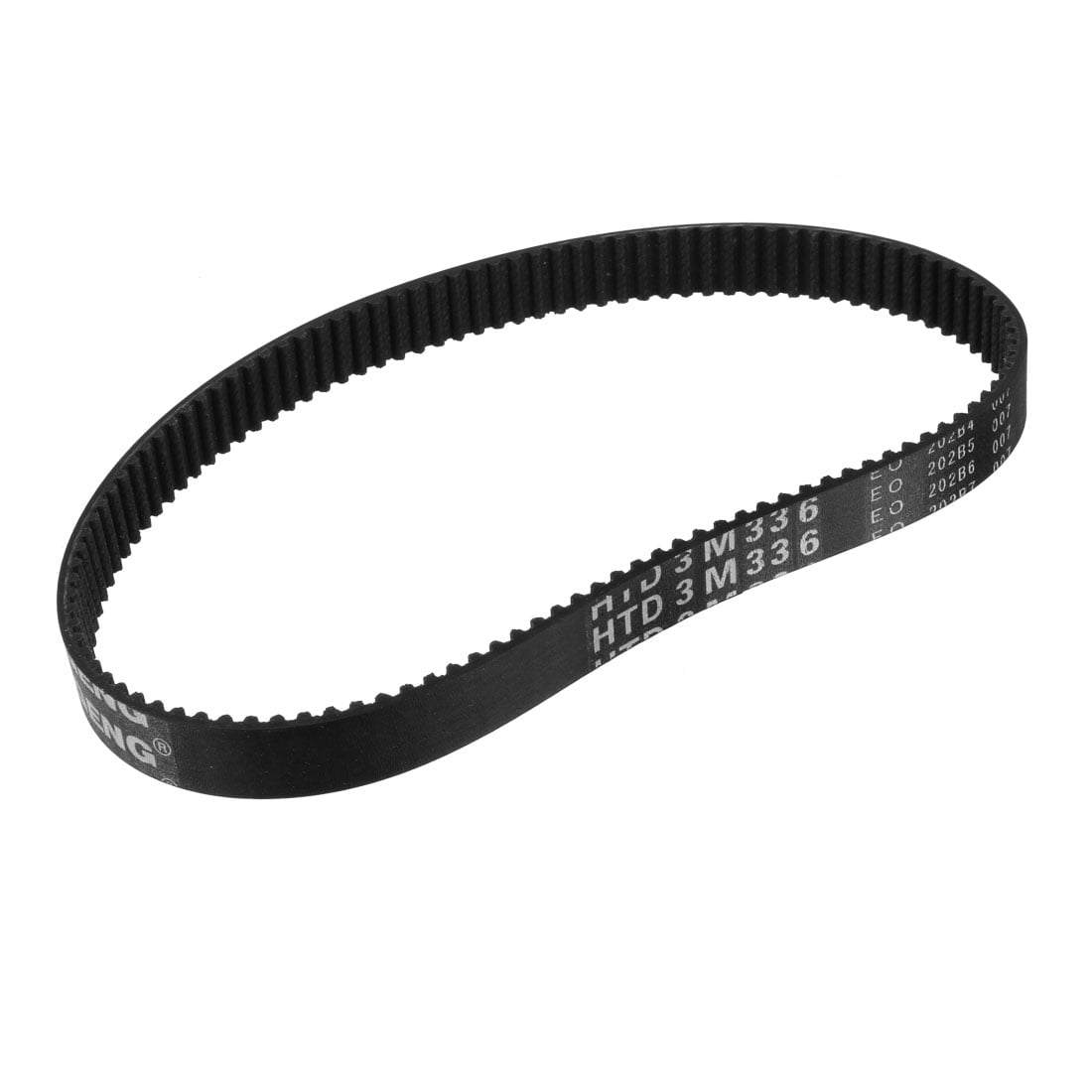

Repeat this control after roughly one hour running time. After adjustment to the correct tension, run the drive for a short while and then check the tension and alignment again. The toothed pulleys must be precisely aligned. This is done to prevent damage to the belt and pulley or rim flange. The belt should be mounted on the pulleys manually without the aid of tools such as screwdrivers or similar. The selection of the number of teeth required is similar to that for the other norelem toothed belts. The axis must also be parallel to each other with HTD toothed belts. The tooth contour (round) of the HDT belts ensures for a high degree of protection against tooth jumps. The transferable output is several times higher compared to a classic inch pitch trapezoidal profile. If the HTD tooth profile drives are dimensioned correctly, they are also extremely durable. An additional advantage is the high resistance to various environmental influences. The special tooth form reduces the typical running noise of the belt to a minimum - especially in comparison to the classic trapezoid tooth form belts from norelem.
Pulleys timing belts iso#
The norelem HTD tooth profile is certified according to ISO 13050. Direct sunlight or contact with chemical substances should also be avoided.

Ensure that the toothed belts are not tightly rolled or bent when in storage. These bends result in a shorter service life for the drive. A smooth back tension pulley causes bending. A toothed idler on the slack side of the belt is preferable to a back tension pulley. By drives with fixed centre distances the use of tension rollers is recommended so that the belt tension can be effectively adjusted. The correct alignment and tension of the drive is very important for a long service life and quiet running during operation. plan enough room to allow for adjustments do not forcefully lever the belt over rim flange

use the largest possible pulley diameter the axis should lay parallel to each other (a laser enables precise alignment) The following should be taken into consideration during installation:
Pulleys timing belts pdf#
The endless belts are available in the standard length range of 165 mm to 2250 mm.ĭiagrams and performance charts for size selection can be found in the PDF documents on the product pages. The toothed belts provide high power transmission in various industrial applications such as machine tools, industrial robots or packaging machines. 30% more output with smaller dimensioning of the drive as by classical T and AT toothed belts. Polyurethane belts are maintenance-free, low-noise, robust and extremely durable. The combination of elastomer teeth and steel reinforcement cords ensure high power transmission. The toothed belts are made from polyurethane.

The version AT (AT5 & AT10) is the reinforced version for transferring higher torques. This sort of drive is often used because it combines inexpensive and reliable properties. This is the toothed belt type with the classic trapezoidal profile as depicted in DIN 7721. The version T (T5 & T10) is the standard version. Various typs of toothed belts and toothed belt pulleys are available from norelem: Toothed belt drives are always used where synchronous and smooth power transmission should be ensured.


 0 kommentar(er)
0 kommentar(er)
